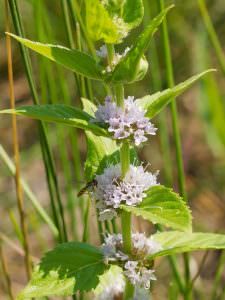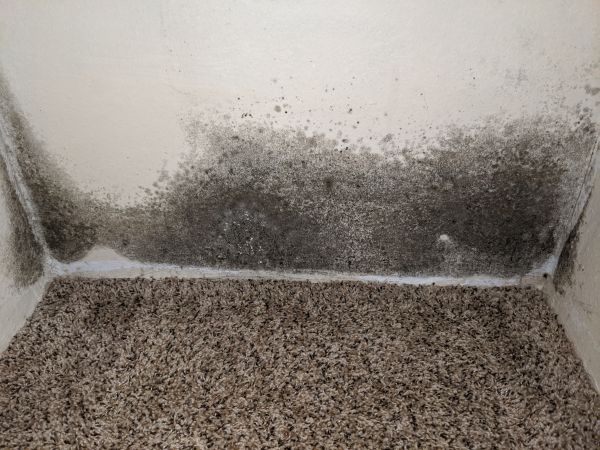The often rainy, yet beautifully green Pacific Northwest has a surprisingly accommodating climate for a wide variety of plants to grow and thrive. Tropical-looking, but cold tolerant palms and banana trees have been grown here as well as plants that require chilly temperatures, such as apples, lilacs, and tulips. Despite the ability to grow such a diverse range of flora, native plants have various ecological and economical benefits.

Mint (source: northernbushcraft.com)
- Ability to grow well with less effort than many non-native plants
- Food for humans, birds, pollinators, and all varieties of other creatures
- Some native plants have medicinal value, such as mint and ginger
- Essential habitats for critters
- More abundant and easier to obtain than non-native plants
- Native plants may already be present on site or nearby when choosing a site for a home or business
- If purchasing the plants, native plants tend to be less costly than exotic varieties due to availability
To find out what plants are native to the area, check non-cultivated areas in the vicinity of the site to start with. There are also various lists and databases online that provide information about native plants, such as NW Plants and Plant Oregon.
According to NW Plants, once a native plant is established in an area after the couple of years, most will go through a typical dry summer season without requiring water. During the establishment period, provide enough water to help with root growth. Reduce the amount of extra water gradually and watch for signs of water stress, such as wilting or curling of leaves or a dull appearance to the leaves. Two hardy, yet attractive native plants in the Willamette Valley are the Tall Oregon Grape and Douglas Firs. Some native plants, such as Trilliums and Camas, require little to no maintenance and go dormant in the dry summer season.
Select a site that is conducive to growth for that plant. Group similar plants together (also called zoning) depending on how much sun, shade, and/or water they require. Nearly all Pacific Northwest native trees do just fine in full sunlight. Trees such as the Oregon Ash, Douglas Fir, White Pine, Hawthorne, Crabapple, and Pacific Madrone do well in partial shade. For medium shade trees, Oregon Myrtle, Big Leaf Maple, Spruce, Hemlock, Pacific Silver Fir, Grand Fir, White Fir, Canyon Live Oak, Tan Oak, and Cascara are good choices. If there is a lot of shade, some tree options include Vine Maple, Western Hazelnut, Pacific Dogwood, Sub-Alpine Fir, Western Red Cedar, and Western Hemlock.

Jelly ear mushroom (source: northernbushcraft.com)
Edible native plants can add both aesthetics and tastiness and/or medicinal value to Northwest landscapes. Wild mint can be turned into a delicious tea that is good for various ailments, such as an upset stomach and nausea. Oregon grape can be turned into a medicinal tincture that is good for the immune system. The Pacific Northwest has many delicious varieties of berries, such as huckleberry, black huckleberry, red huckleberry, blueberry, strawberry, raspberry, marionberry, cranberry, and mulberry. Edible mushrooms are abundant as well, such as the fairy ring mushroom, jelly ear (aka wood ear) mushroom, and hedgehog mushroom. Other examples of edible Pacific Northwest plants include asparagus, cattail, catnip, fragrant water lily, Jerusalem artichoke, miner’s lettuce, mustard, northern water plantain, pineapple weed, siberian miner’s lettuce, sunflower, wild bergamot, wild ginger, and wild licorice.

Kelley Engineering Center – OSU
Oregon State University’s Kelley Engineering Center is the greenest academic engineering building in the US. The Gold LEED-certified building utilizes native plants to act as bio-filters to remove unwanted contaminants from the environment and create a more pleasant place to sit outdoors.

Kelley Engineering Center – OSU
Oregon State University uses the term “water-wise garden” to describe the use of native plants in landscaping for water conservation. According to their Pacific Northwest native plant fact sheet, the following plants are recommended for water-wise landscapes:
- Trees: Western red cedar (Thuja plicata), bitter cherry (Prunus emarginata), Pacific madrone (Arbutus menziesii), Oregon white oak (Quercus garryana), Ponderosa pine, Willamette Valley form (Pinus ponderosa)

Oregon Oak (source: nwplants.com)
- Shrubs: Blueblossom (Ceanothus thyrsiflorus), red flowering currant (Ribes sanguineum), red osier dogwood (Cornus sericea), blue elderberry (Sambucus mexicana), red elderberry (Sambucus racemosa), evergreen huckleberry (Vaccinium ovatum), hairy manzanita (Arcotstaphylos columbiana), mock orange (Philadelphus lewisii), oceanspray (Holodiscus discolor), Oregon grape (Berberis nervosa), tall Oregon grape (Berberis aquifolium), Nootka rose (Rosa nutkana), western serviceberry (Amelanchier alnifolia), wavey-leaved silk-tassel (Garrya elliptica)
- Groundcovers: Kinnikinnik (Arctostaphylos uva-ursi), coastal strawberry (Fragaria chiloensis), wild strawberry (Fragaria virginiana), woods strawberry (Fragaria vesca)
- Herbs and Ferns: Douglas aster (Aster subspicatus), blue-eyed grass (Sisyrinchium bellum), camas (Camassia sp.), western red columbine (Aquilegia formosa), goldenrod (Solidago sp.), Douglas iris (Iris douglasiana), Oregon iris (Iris tenax), Oregon sunshine (Eriopyllum lanatum), pearly everlasting (Anaphalis margaritacea), Cascade penstemon (Penstemon serrulatus), broadleaf stonecrop (Sedum spathulifolium), sword fern (Polystichum munitum), yarrow (Achillea millefolium)
- Annuals: California poppy (Eschscholzia californica), farewell-to-spring (Clarkia amoena), globe gilia (Gilia capitata)
More information:
Wild Edible Plants of the Pacific Northwest: http://www.northernbushcraft.com/plants/
Oregon State University Native Plant Fact Sheet: http://extension.oregonstate.edu/yamhill/sites/default/files/documents/incorp_pnw.pdf
NW Plant Database: http://www.nwplants.com/index.html
Wild Plants (Edible and Medicinal): http://www.wildernesscollege.com/plants-used-for-medicine.html




